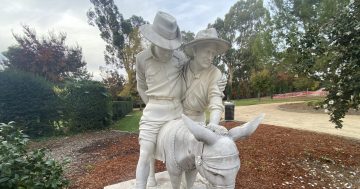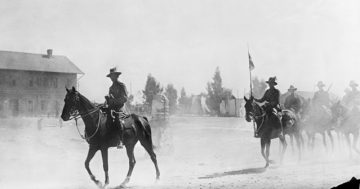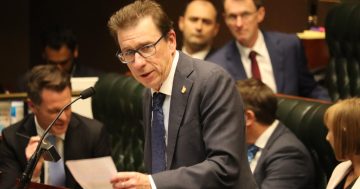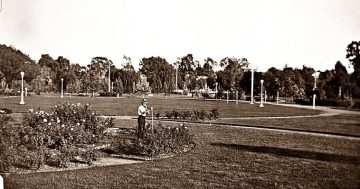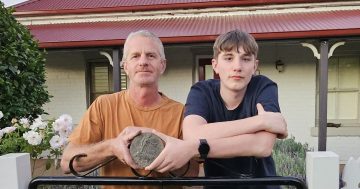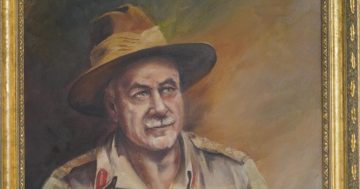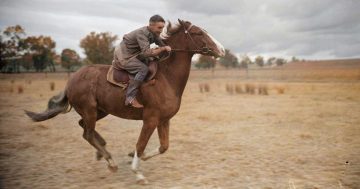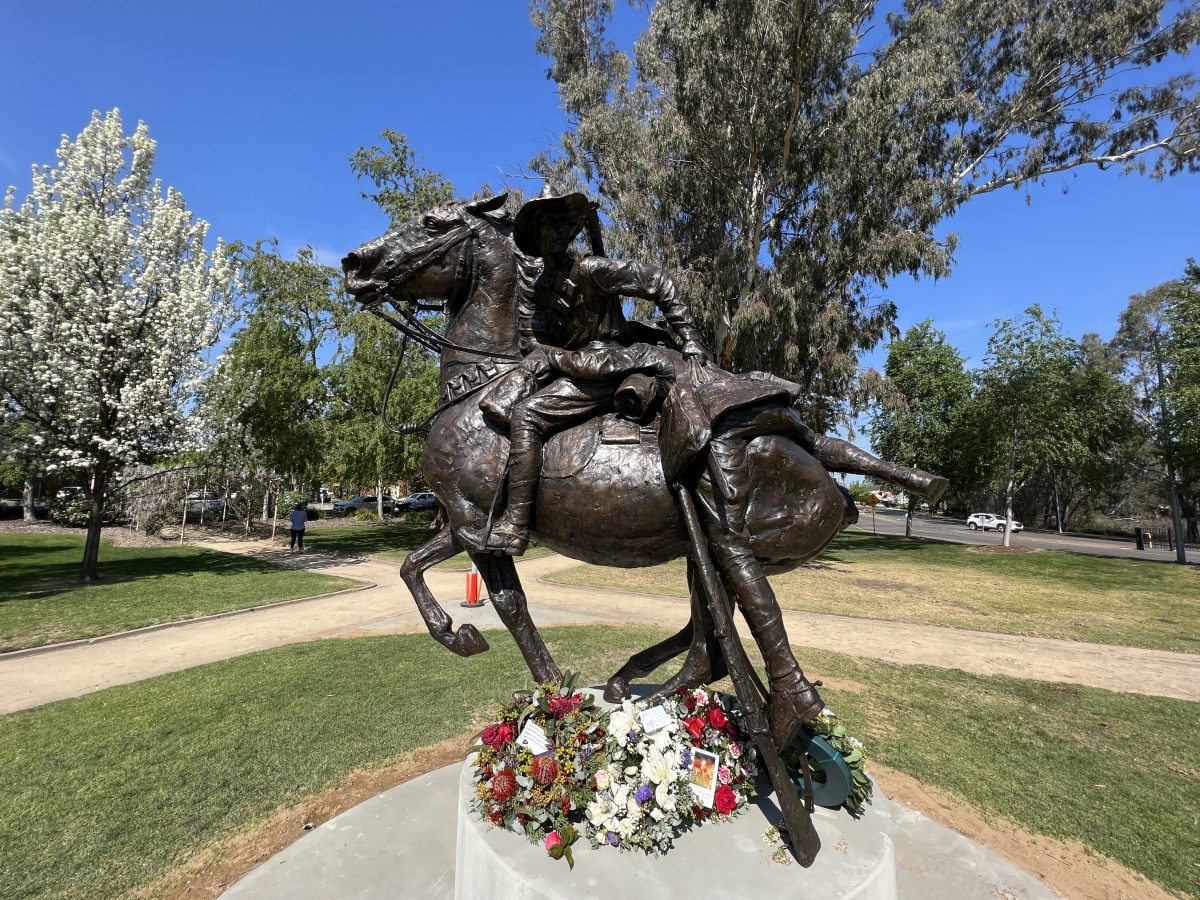
Wagga’s Light Horse statue captures the moment a rider returns for his mate. Photo: Chris Roe.
Six years after the idea for a memorial to Australia’s iconic Light Horsemen in Wagga was born, a spectacular bronze statue now holds pride of place in Wagga’s Victory Memorial Gardens.
Dubbo sculptor Brett (”Mon”) Garling’s design was inspired by the Anzac ideal of ”never leaving a mate behind” and captures the moment a Light Horseman and his trusty steed (Waler) rescue a stranded trooper amid battle.
The sculpture recognises Wagga’s strong connection to the iconic mounted infantry of World War I and is the result of six years of hard work and fundraising by the Light Horse Memorial Riverina and South West Slopes committee.
Hundreds flocked to the grand opening, which included a parade of Light Horsemen in full historical kit and a service commemorating the men who served with distinction at Gallipoli and in the desert of Palestine Sinai.
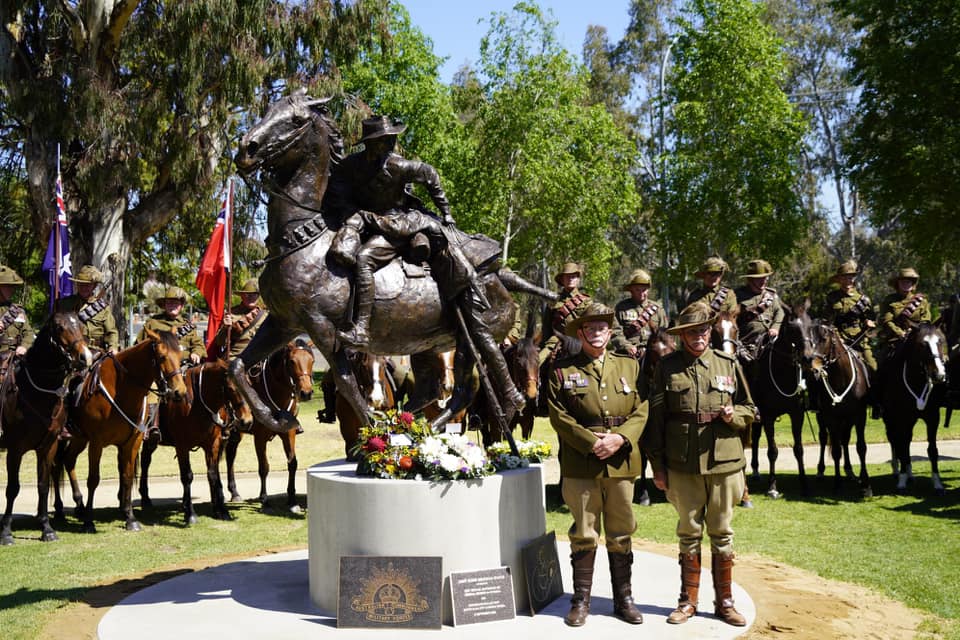
Hundreds attended the spectacular unveiling of the new Light Horse statue. Photo: Michael McCormack (Facebook).
In his book He Belonged to Wagga, author Ian Hodges examines the lives of hundreds of young Riverina men who answered the call, including many who joined the Light Horse unit.
The book was recognised this month with a prestigious NSW Premier’s History Award and Ian said Wagga’s experience of the Great War “speaks to the whole bush element of the Australian Imperial Force”.
“I ended up with a list of well over 2000 individuals who enlisted or had some connection with Wagga, and about 8 per cent of those men went into the Light Horse, which is 2 per cent higher than the national average,” he said, adding that many of the Riverina’s horses were also enlisted.
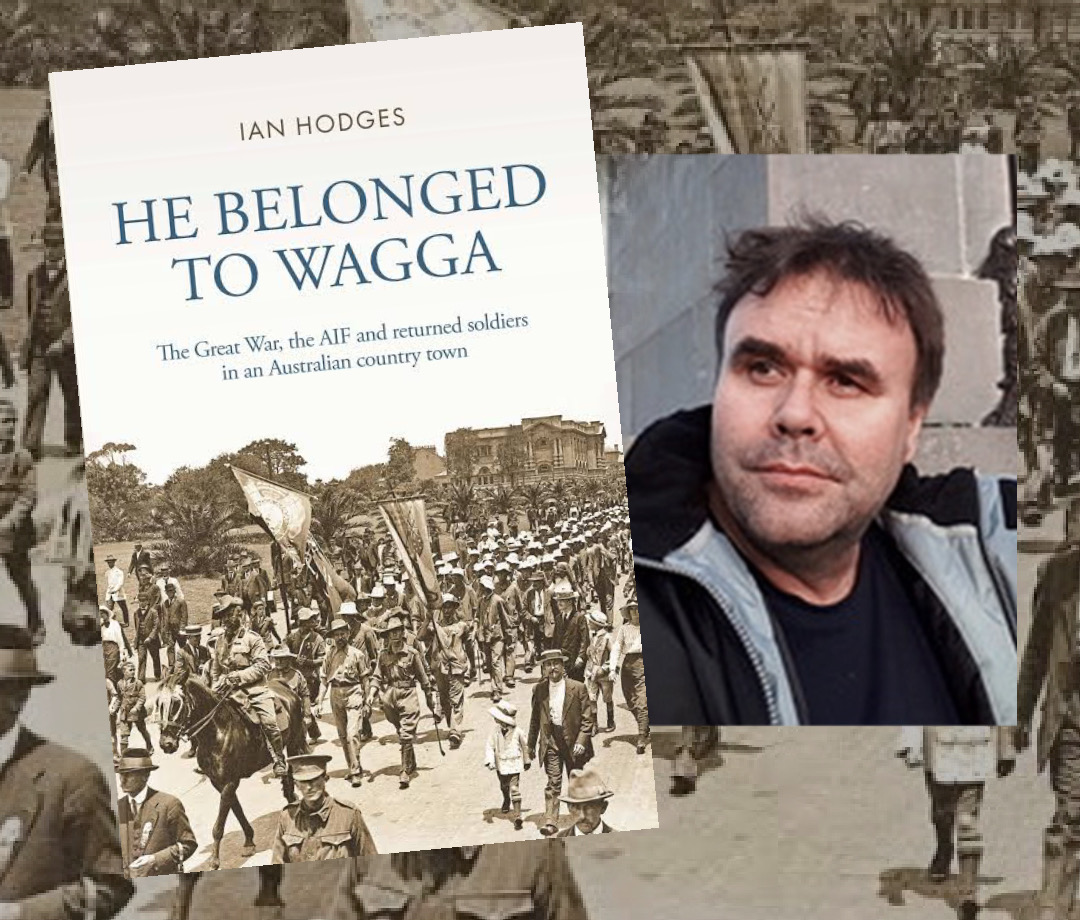
Ian Hodges will launch his book on Remembrance Day. Photos: Supplied.
Offering a few examples of the stories he had discovered through his research, Ian said one young lad from Wagga was given a horse by a supportive local.
“Alan Stinson had only recently graduated from Wagga High School and when he enlisted in the Light Horse, he was given a mount described as a ‘very fine charger’ by a local farmer as a present,” he said.
“He was given the horse to take with him into the army, but of course, most recruits had to take what the army gave them.”
Another digger, Edward Crouch, exemplified the region’s horsemanship.
“He was described as an expert ‘Rough Rider’, which in those days referred to someone who could ride any horse, broken or unbroken,” Ian said.
“He had this amazing reputation and his legend supposedly grew in Egypt when he won a considerable sum of money for breaking a horse that had already thrown 30 other horsemen.”
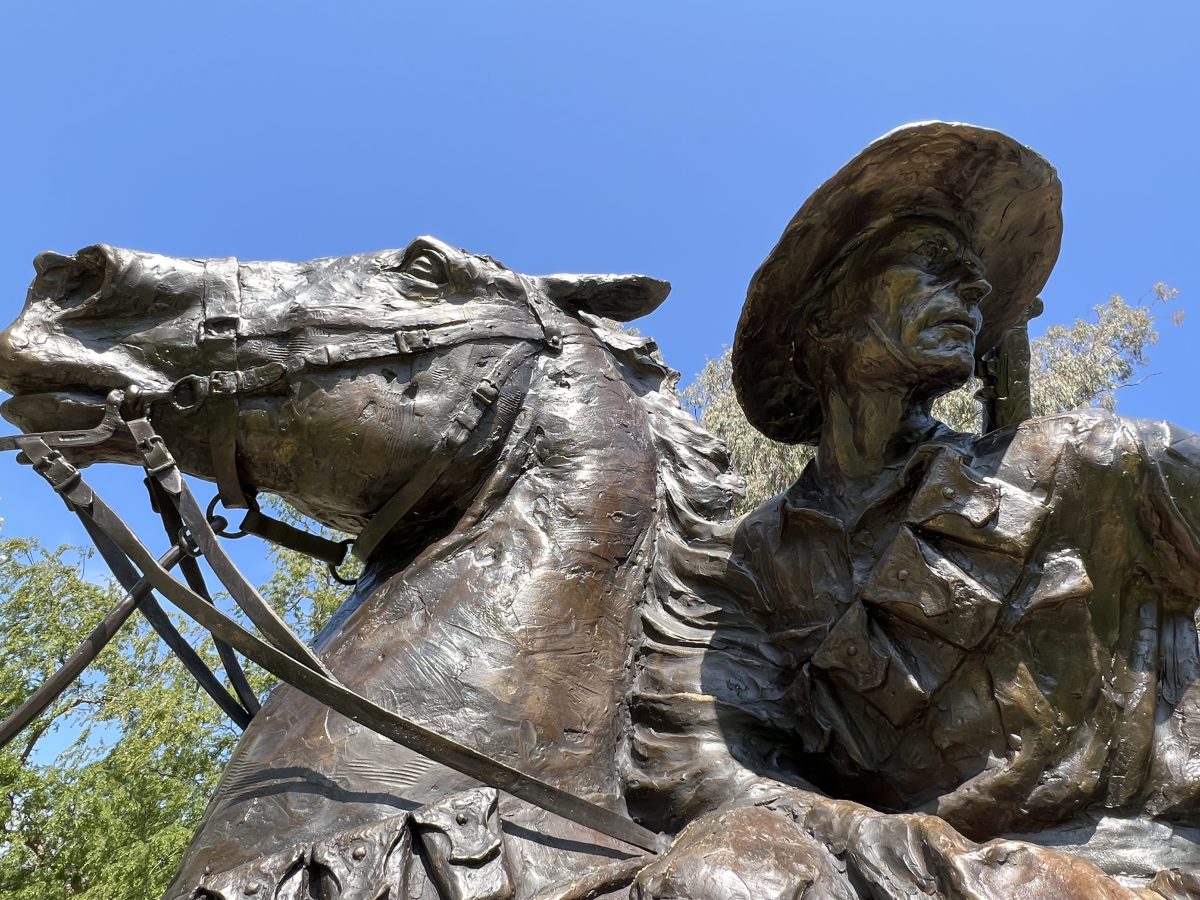
Dubbo sculptor Brett (Mon) Garling’s design was inspired by the Anzac ideal of ”never leaving a mate behind”. Photo: Chris Roe.
Hugh Hutton was a well-respected local farmer whom Ian describes as “the opposite of Crouch in many respects” and was known for his innovation in farming techniques and his love of birdwatching.
“He was a very thoughtful, cultured and well-educated man who left his farm in the care of a friend while he went off to the war with the Light Horse,” he said.
“Sadly, he lost an arm on Gallipoli at Lone Pine but when he came back to Wagga, he was very active in recruiting.
“He spoke at a rally where he said, even though he’d lost his arm, he’d go back if they’d have him and that the war was a great game.”
In a tragic turn of events, Hutton would not live to see the war’s conclusion as he fell from a buggy and died from cerebral meningitis.
Of course, many young men were lost to the war and Ian said that our first casualty was a Light Horseman.
“John Mulholland was the first Wagga man to die in the war, and he actually died in Sydney from an illness before he even left Australia,” he said.
“His cousin was a very well-known local called Dooley Mulholland, who also enlisted and was very active in local politics.
“While he survived the war, he was gassed and died at a young age, so he was really another casualty from the war.”

A parade of Light Horsemen signals the start of the dedication of the new monument at the Victory Memorial Gardens. Photo: Michael McCormack (Facebook).
He Belonged to Wagga also explores the lives of the servicemen who returned and Ian said the war had a mixed impact on Wagga’s servicemen.
“Some found it very difficult to come home and difficult to leave the war behind,” he said.
“Either because they missed the camaraderie and the friendships or, for some, they came back very ill or very disturbed mentally.”
The newly unveiled monument can be seen at the western end of Wagga’s Victory Memorial Gardens, and you can learn more about the award-winning He Belonged to Wagga here.







